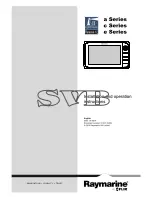
-
5
Areas that bear the risk of explosion are di-
vided into zones, according to the frequen-
cy and duration of explosion-risk atmos-
phere in BetrSichV and EN 1127-1.
The definition of the zones lies in the re-
sponsibility of the operator.
Tips for zoning are included in the BetrSi-
chV, EN 1127-1, BGR 104 – Ex-guideline
of BG Chemie and in the EN 60079-10.
–
Zone 0
Zone 0 is an area where dangerous ex-
plosion-risk atmosphere is present as a
mixture of air and flammable gases, va-
pors or mists at all times, across long
time periods or frequently.
–
Zone 1
Zone 1 is an area where (during normal
operation) dangerous explosion-risk at-
mosphere is present as a mixture of air
and flammable gases, vapors or mists
from time to time.
–
Zone 2
Zone 2 is an area where (during normal
operation) dangerous explosion-risk at-
mosphere as a mixture of air and flam-
mable gases, vapors or mists is not
normally present and if present, only for
a short time.
Danger
If there is a risk of dust, the container to be
cleaned must be steamed accordingly!
1 The interior cleaner must only be used
in Zone 0 of containers if the containers
are at least 3.1 m in diameter with the
usual container height or do not exceed
a comparable container size.
2 The mass content of non-diluted solid
substances in the cleaning liquid must
not exceed 1%.
3 The interior cleaner must be ground
electro-statically.
4 The pump for the cleaning liquid must
only be operated while it is filled with flu-
id.
5 When cleaning by means of water jets,
you must use working pressures up to
14 MPa (140 bar) and liquid through-
puts of less than 12,000 l/h (3.3 l/s) if
the containers do not exceed a diame-
ter of 3.1 m with a typical container
height or a comparable container size.
6 The operating temperature of the clean-
ing liquid water with cleaning agents
must not must not exceed 95 °C.
The compliance with the maximum ad-
missible detergent temperature and the
compliance with the maximum admissi-
ble steam temperature is to be moni-
tored and ensured by the plant operator
in an adequate way. The plant operator
must install a shutdown automatism in
the system for the case that the maxi-
mum admissible detergent or steam
temperature is exceeded.
7 The operating temperature of the clean-
ing liquids, brines and acids must not
must not exceed 20 °C.
8 The interior cleaner must be check for
proper condition and proper function as
per operating instructions of the manu-
facturer after adequate operating time.
If applicable, a repair needs to be con-
ducted.
9 The interior cleaner must only be used
with cleaning liquids and in such media,
whose affect on the materials is not
damaging.
Only cleaning liquids that have been
approved by Kärcher must be used.
10 Cleaning liquids that contain flammable
solvent particles, must comply with the
ignition groups IIA and IIB. Solvents of
the ignition group IIC must not be
sprayed.
11 The interior cleaner must not be con-
stantly located in Zone 0, but only dur-
ing the actual container cleaning. The
operating guidelines as per BetrSichV
as well as other national guidelines
must be adhered to. Take into consider-
ation, that the mixture of the container/
interior cleaner brought into the con-
tainer is not resistant to breakdown
from flames.
12 Hoses must be conductive (electrostat-
ically) (resistance R < 1000000 Ohm).
13 Only cleaning agents with a conductivi-
ty G > 1000 pS/m may be used.
14 All parts that touch media must be con-
nected to the grounding system.
15 The lifting gear for folding out and fold-
ing up the cantilever arms installed on
the plant may not exceed a maximum
lifting and lowering speed of 1 m/s =
60 m/min.
Basically, the tank to be cleaned must be
completely emptied.
Only the products listed in Chapter "Clean-
ing processes" must be cleaned using the
cleaning sequences listed there.
Note:
The chapter "Specifications" con-
tains a list of the permitted cleaning liquids.
Zone layout
Special conditions in the Ex area
Durability against acids and brines
19
EN
Summary of Contents for ICH 120/14 Ps F2
Page 2: ...2...
Page 27: ...1 5 ZZZ NDHUFKHU FRP 5 3V ZH ZH ZH ZH ZH ZH ZH ZH ZH ZH ZH ZH ZH ZH ZH ZH ZH 27 ZH...
Page 28: ...2 B A 5 1 3 2 4 4 6 7 9 7 8 9 28 ZH...
Page 29: ...3 NJ UFKHU 9 c 29 ZH...
Page 30: ...4 A C B D ICH 120 14 Ps F2 30 ZH...
Page 31: ...5 HWU6LFK9 1 HWU6LFK9 1 5 1 03D e e UFKHU HWU6LFK9 5 S6 P 31 ZH...
Page 32: ...6 3V e e e 03D P e NJ K 03D 5S e P K PP PP NJ a F 7 e 7D e 32 ZH...
Page 34: ...8 P D E F NJ NJ G H I c a b c d e f g 34 ZH...
Page 35: ...9 J K I I K UFKHU UFKHU f h g 35 ZH...
Page 36: ...10 UFKHU 36 ZH...
Page 38: ...12 03D e 1 e e 0 0 03D e e e 38 ZH...
Page 39: ......















































